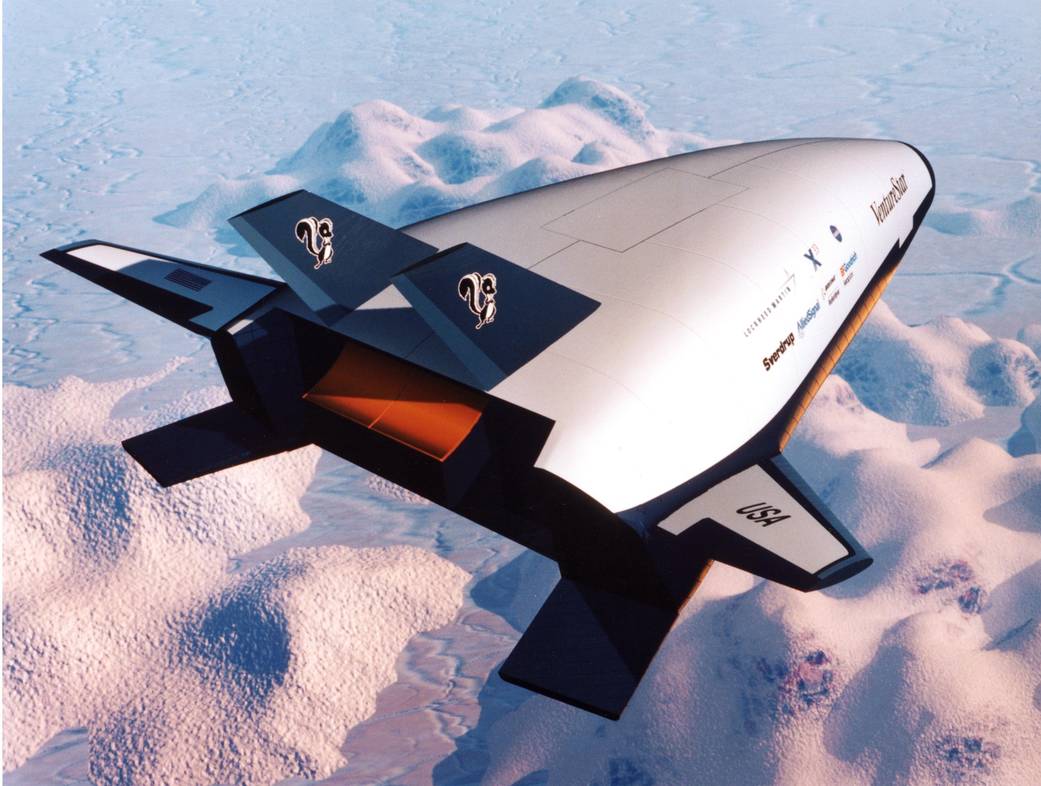
NASA selected Lockheed Martin to design, build, and fly the X-33 Advanced Technology Demonstrator test vehicle between March and December 1999. The X-33, a half-scale vehicle, was expected to feature a lifting-body shape, a new “aerospike” rocket engine, and a rugged metallic thermal protection system. It was expected to demonstrate in flight the new technologies needed for a Reusable Launch Vehicle (RLV). The X-33 was to be an unpiloted vehicle, launched vertically like a rocket but landed horizontally like an airplane, and was expected to be capable of reaching an altitude of approximately 50 miles and speeds of more than Mach 11. A full-scale RLV would increase reliability dramatically and lower the cost of putting a pound of payload into space from the current figure of $10,000 to $1,000. However, in 2001 NASA ceased funding the program.


























